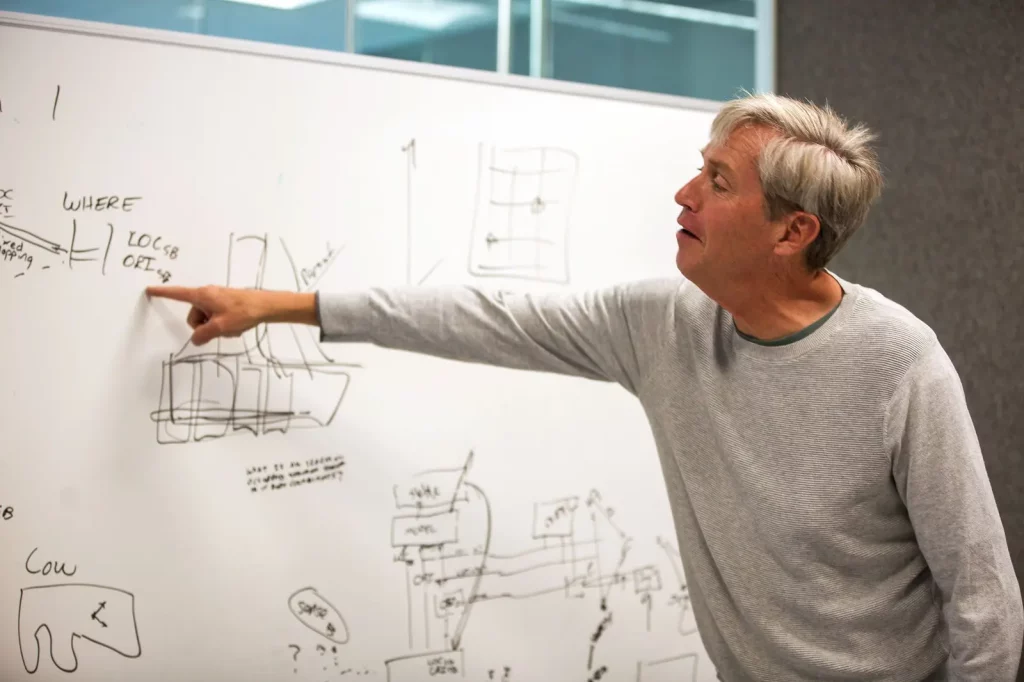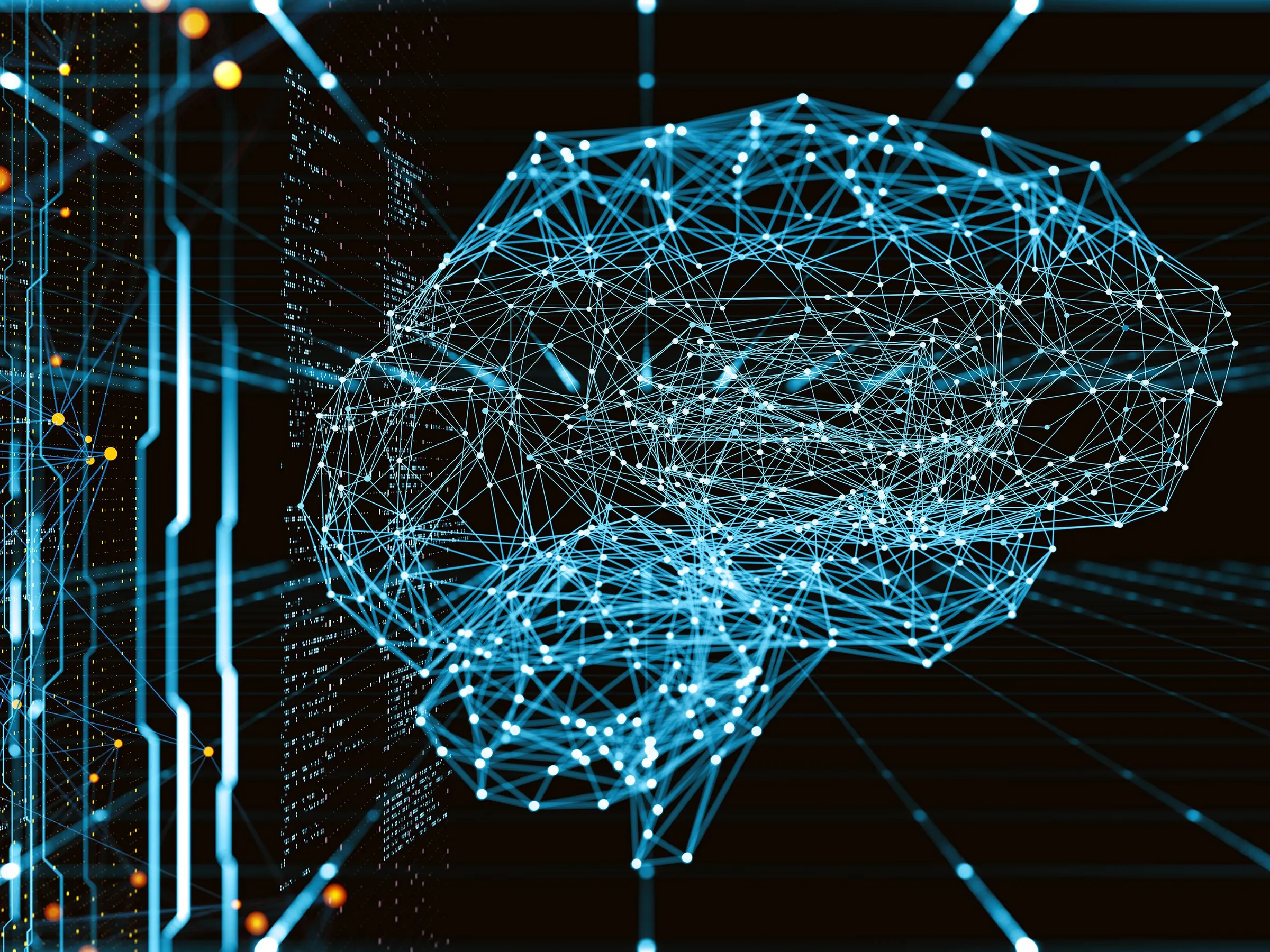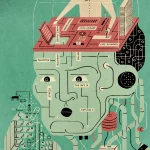An ambitious new endeavor called the Thousand Brains Project aims to develop a new AI framework that its founder says will operate on the same principles as the human brain—yet will be fundamentally different from the principles underlying the deep neural networks that dominate artificial intelligence today. With funding from the Gates Foundation, the open-source initiative aims to partner with electronics companies, government agencies, and university researchers to explore potential applications for its new platform.
In today’s artificial neural networks, components dubbed neurons are fed data and cooperate to solve a problem, such as recognizing images or predicting the next word in a sequence. Neural nets are called “deep” if they possess multiple layers of neurons.
Deep neural networks currently match or beat human performance on many tests, such as identifying skin cancer and playing complex games, However, they are plagued by a host of problems. For example, as they grow in size and power, they become more energy hungry—to train OpenAI’s GPT-3, a 2022 Nature study suggested the company spent US $4.6 million to run 9,200 GPUs for two weeks. Neural networks also often prove unstable, with slight alterations in the data they receive leading to wild changes in outcomes. For instance, previous research found that changing a single pixel on an image can make an AI think a horse is a frog.
To overcome these challenges, the Thousand Brains Project aims to develop a new AI platform by reverse engineering the neocortex, which accounts for about 80 percent of the human brain’s mass.
“Today’s neural networks are based on basic neuroscience from 80 years ago. We’ve learned a lot about neuroscience since then, and we want to use that knowledge to advance AI,” says Jeff Hawkins, who co-invented the Palm Pilot in the 1990s. Hawkins is co-founder of the AI company Numenta in Redwood City, Calif., which launched the Thousand Brains Project on 5 June at Stanford University’s Human-Centered Artificial Intelligence conference.
The Goals of the Thousand Brains Project
This project’s name is inspired by the structure of the neocortex; it’s made up of thousands of so-called cortical columns, each divided into multiple layers of neurons. “The human brain has about 150,000 cortical columns, and each one is essentially its own learning machine,” Hawkins tells IEEE Spectrum.
Deep networks essentially generate a single model of the world, processing data step by step from simple features to complex objects, Numenta researchers have argued. In contrast, the company’s “thousand brains theory of intelligence” proposes that the brain’s many cortical columns generate multiple maps of the world, as if each human brain was actually thousands of brains working in parallel simultaneously.

“Once we learn how to build one cortical column, we can build as many as we want,” Hawkins says.
The project aims to mimic this neuroscience structure in AI with many cortical column-like units that can each perform a sensorimotor task, such as operate a robotic finger. These units can then communicate with each other using links that are much like the long-range connections seen in the neocortex. Hawkins believes that this modular structure will make his approach easily scalable.
“The human brain got big very quickly in evolution by replicating the cortical column many times, and we hope we can do the same,” Hawkins says.
The Role of Sensorimotor Learning
The project is also based on the neocortex’s role in sensorimotor learning. Whereas deep neural networks currently learn from giant static databases, the neocortex learns in a dynamic manner: It perceives its surroundings using the senses, explores how things work using body movements, and builds models of the world from both this sensory and motor feedback.
Hawkins argues this difference between AI strategies is profound. Creating and labeling the datasets that deep networks learn from is a costly, laborious endeavor, and these systems are unable to learn continuously from new data; instead, they have to retrain on the entire database. In contrast, the neocortex is able to learn in an active manner, and can quickly adapt to new data.
“We can build machines that work like the neocortex in terms of sensorimotor learning, and they’re inherently robotic,” Hawkins says. “I think our work is not only the future of AI, but also robotics.”
In addition, the project is developing AI based on the neocortex’s reliance on reference frames. In the mammalian brain, so-called place cells help encode memories of locations and grid cells help map locations in space. The neocortex uses these reference frames to store and understand the constant stream of sensorimotor data it receives.
“The way in which the brain structures data—in 2-D and 3-D reference frames—copies the structures of objects in the real world,” Hawkins says. “When you look at deep networks, they don’t fundamentally understand the world, which is why if you just change one tiny feature of an image, they often don’t recognize it. In contrast, reference frames can help the brain understand how its models of objects might change under different conditions.”
Potential applications for this new AI platform might include sophisticated computer vision systems that can use multiple cameras to understand what is happening in scenes, or advanced touch systems to help robots manipulate objects, Hawkins says. “The Gates Foundation is interested in sensorimotor learning for global health. Think about ultrasound, which moves a sensor across space to build a model, such as imaging a fetus. That’s essentially a sensorimotor problem.”
The open-source Thousand Brains Project is developing a software development kit so others can build on its work. The initiative also pledges to not assert its patents related to the Thousand Brains approach.
Funding from the Gates Foundation
The Gates Foundation is providing the Thousand Brains Project a minimum of $2.69 million over two years. (The Gates Foundation declined to comment for this article.) “We also hope to announce agreements with government agencies around the world soon,” Hawkins says.
The project aims to create a complete software version of a cortical column. Then it will connect multiple units for a complex process, such as sight or hearing. “Then we want to cross modalities—say, unite vision and touch—and finally build hierarchies, with a model of the world, composed of objects, which are composed of objects, and so on,” Hawkins said.
Although the Thousand Brains Project is focused on building software, it is collaborating with researchers such as John Shen, professor of electrical and computer engineering at Carnegie Mellon University in Pittsburgh, who is designing hardware based on the Thousand Brains concept.
“Neuroscience research has made significant advances in understanding how the brain works and how it is constructed since the first brain-mimicking neuromorphic hardware was created,” Shen says. “What we’d like to do is to take the best of what we now know of neuroscience and combine it with the best of silicon to make a new kind of computer. We’ve really embraced the thousand brain theory, and this summer we’re talking with chip companies to see if any have any interest in partnering with us.”


